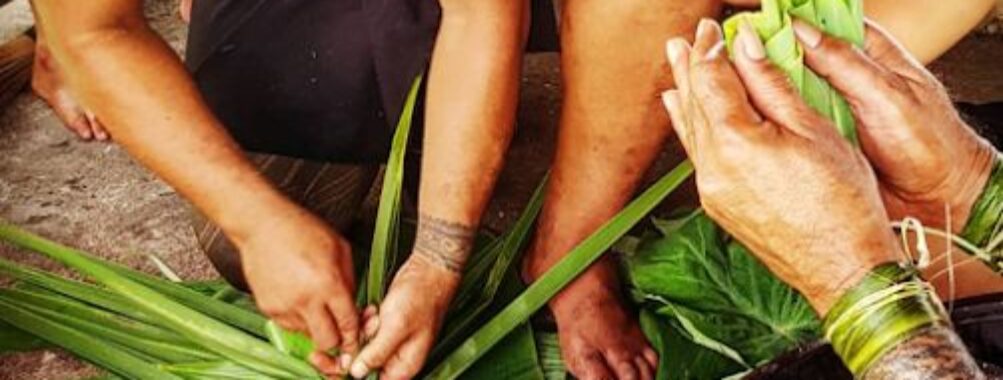
Samoa Cultural Village
Table of Contents The Samoa Cultural Village is one of those places that quietly sneaks up on you—one that you think might be a quick stop but ends up being the highlight of your trip. Tucked right in the heart of Apia, it’s not just a tourist attraction; it’s a living, breathing window into Samoan life—what locals call Fa’a Samoa, or “the Samoan way.” The moment you step in, you can feel the rhythm of the culture—literally, with the beat of the drums echoing through the air. There’s something deeply grounding about it, like you’re stepping into a story that’s been told for generations. What I love most about the Samoa Cultural Village is that it’s not some polished, overly rehearsed show. It’s real people sharing their real culture, with warmth and humor that make you feel instantly at home. You’ll see traditional tattooing demonstrations (yes, the real deal—hand-tapped tattoos that tell stories of heritage and bravery), watch women weaving mats with incredible precision, and smell the earthy scent of wood smoke as food cooks in an umu—a traditional underground oven. There’s a rawness to it, but in the best possible way. It’s not about perfection; it’s about connection. And if you’re anything like me, you’ll find yourself drawn to the laughter. The guides have this effortless charm, cracking jokes, teasing each other, and making you feel like part of the family. It’s educational, sure, but it’s also full of heart. You walk away not just with photos, but with a genuine understanding of what makes Samoan culture so special—its sense of community, respect, and joy in everyday life. What’s particularly great is that the experience feels personal. It’s not a massive tourist operation where you’re herded around. Instead, you get to chat with artisans, ask questions, and even try your hand at a few crafts. And if you’re lucky, you might catch a spontaneous song or dance—because in Samoa, music is never far away. Samoa’s tropical climate means it’s generally warm year-round, but timing your visit can make a big difference. The dry season, from May to October, tends to be the most comfortable for exploring. The humidity drops a bit, and the skies are clearer, perfect for snapping those golden-hour photos of the performers or the lush greenery surrounding the village. I visited in June, and it was absolutely ideal—sunny mornings, a light breeze, and just enough warmth to make the umu feast taste even better. If you’re visiting during the wet season (November to April), don’t worry too much. The showers usually come in short bursts, and there’s something quite magical about watching a cultural performance while the rain drums softly on the roof of the fale (traditional open-sided house). Just bring a light rain jacket and maybe a sense of humor—because sometimes, the unexpected moments are the ones that stick with you the most. Reaching the Samoa Cultural Village is pretty straightforward, especially if you’re staying in or around Apia. Most hotels and guesthouses can arrange a taxi or shuttle, and it’s just a short drive from the main town area. If you’re the adventurous type, you can even walk there and take in the local street life—colorful markets, friendly greetings from locals, and the occasional rooster strutting across the road (yes, really). For those renting a car, parking is readily available nearby. The signage is clear, and the village is located close to several other attractions, so you can easily make a day of it—pair it with a visit to the nearby museum or a stroll along the waterfront. Public transportation in Samoa isn’t as structured as in some countries, but local buses do run along Beach Road, and hopping on one is an experience in itself—windows down, music playing, and a friendly driver who’ll probably strike up a conversation before you even sit down. Here’s the thing about visiting the Samoa Cultural Village: it’s not just about watching—it’s about participating. So come with an open mind, a curious spirit, and maybe a bit of flexibility in your schedule. The demonstrations can run a little longer than planned (island time is a real thing here), but that’s part of the charm. You’re not just ticking off an attraction; you’re sharing in a cultural exchange. One thing I learned the hard way—don’t rush off right after the main performance. Stick around a bit. The performers often mingle with visitors afterward, and that’s when the best conversations happen. I ended up learning how to say a few Samoan phrases and even got a mini dance lesson (which, admittedly, I was terrible at, but it made for a great story later). And if you’re traveling with kids, this place is gold. The hands-on activities keep them engaged, and the performers are incredibly patient and playful with little ones. It’s one of those rare attractions where both adults and children walk away equally delighted. For anyone passionate about culture, history, or just human connection, the Samoa Cultural Village offers something truly meaningful. It’s not flashy or commercialized—it’s honest. You’ll leave with a deeper appreciation for Samoan traditions, a full belly from the umu feast, and probably a few new friends. And honestly, isn’t that what travel is all about? So, if you find yourself wandering through Apia and wondering what to do next, make this your stop. Take your time. Listen to the stories, taste the food, feel the rhythm of the drums. The Samoa Cultural Village isn’t just a place to visit—it’s an experience that stays with you long after you’ve left the island.Description
Key Features
Best Time to Visit
How to Get There
Tips for Visiting
Location
Places to Stay Near Samoa Cultural Village
Find and Book a Tour
Explore More Travel Guides
No reviews found! Be the first to review!